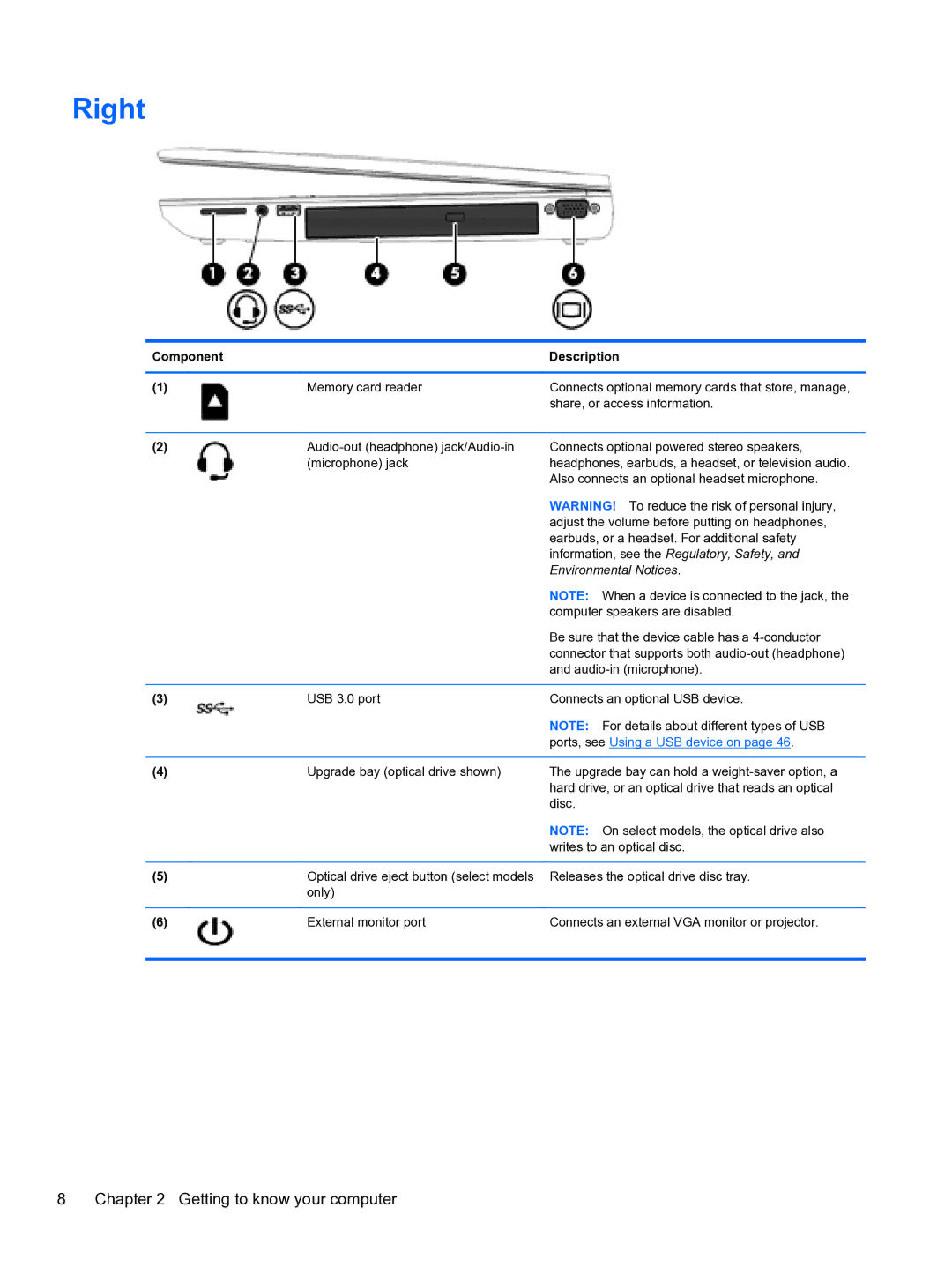
Right
Component |
| Description |
|
|
|
(1) | Memory card reader | Connects optional memory cards that store, manage, |
|
| share, or access information. |
|
|
|
(2) | Connects optional powered stereo speakers, | |
| (microphone) jack | headphones, earbuds, a headset, or television audio. |
|
| Also connects an optional headset microphone. |
|
| WARNING! To reduce the risk of personal injury, |
|
| adjust the volume before putting on headphones, |
|
| earbuds, or a headset. For additional safety |
|
| information, see the Regulatory, Safety, and |
|
| Environmental Notices. |
|
| NOTE: When a device is connected to the jack, the |
|
| computer speakers are disabled. |
|
| Be sure that the device cable has a |
|
| connector that supports both |
|
| and |
|
|
|
(3) | USB 3.0 port | Connects an optional USB device. |
|
| NOTE: For details about different types of USB |
|
| ports, see Using a USB device on page 46. |
|
|
|
(4) | Upgrade bay (optical drive shown) | The upgrade bay can hold a |
|
| hard drive, or an optical drive that reads an optical |
|
| disc. |
|
| NOTE: On select models, the optical drive also |
|
| writes to an optical disc. |
|
|
|
(5) | Optical drive eject button (select models | Releases the optical drive disc tray. |
| only) |
|
|
|
|
(6) | External monitor port | Connects an external VGA monitor or projector. |
|
|
|
8 | Chapter 2 Getting to know your computer |
